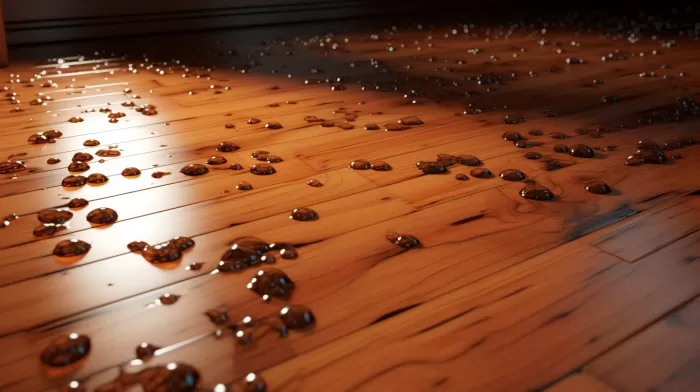Newborns and toddlers are extremely sensitive to environmental changes, and certain home renovation projects can cause long-lasting damage to your child’s health. In particular, installing new floor coverings has been found to significantly increase the risk of respiratory disease in infants.
Researchers from the Helmholtz Center for Environmental Research (UFZ) and the St. Georg Municipal Hospital in Leipzig, Germany discovered that volatile organic compounds (VOCs) released by the flooring are responsible for these breathing problems. It’s crucial to learn about the risks and how to deal with them in order to protect your precious little one from harm.
New Floor Installations: A Dangerous Choice
While installing new floors might seem like a harmless home improvement project, it’s critical to pay attention to the materials involved. Various flooring types emit VOCs, which are pollutants that can harm the respiratory system. Styrene and ethylbenzene are examples of such compounds. When inhaled, they are absorbed through the lungs and can cause harm to the body.
The study found that among newborns in Germany, about 20,000 cases of breathing difficulties, like wheezing, were due to the installation of new floors. Babies of parents with a history of allergies or asthma are even more vulnerable, with their risk increasing by up to five times. It’s not just newborns and infants that are at risk; the damage can begin even before birth.
Prenatal Exposure to VOCs: Potential Harm
The study found that exposure to VOCs during pregnancy is potentially more critical than during the first year of a child’s life. The damage caused by breathing in these chemicals during the prenatal stage can have long-term effects on the respiratory health of the unborn baby.
Preventing the Risks of New Flooring
Hoping to keep your child safe and healthy? Here are some tips to prevent the risks associated with installing new flooring:
1. Wait Until the Baby is Older
Hold off on floor renovations until your child is at least a year old to minimize the risk of respiratory issues. The researchers of the study recommended avoiding new flooring installations during pregnancy and the first year of the baby’s life.
2. Choose Low-VOC Flooring Options
When planning your home renovation project, opt for flooring materials that emit lower levels of VOCs. Sustainable, eco-friendly options, such as bamboo and cork, are good choices for the health of both your family and the environment. You can also find low-VOC versions of carpets, laminates, and hardwood floorings, which can help to minimize the risk of respiratory problems.
3. Look for Third-Party Certifications
Third-party certifications, such as Greenguard and FloorScore, ensure that the flooring materials and finishes you’re using adhere to strict regulations on VOC emissions. Choosing products with such certifications further reduces the risk of harmful exposure to VOCs.
4. Ventilate Your Home
Good ventilation plays a vital role in maintaining a healthy living environment. Make sure your renovation involves maximizing the flow of fresh air throughout your home to dissipate VOCs from new flooring materials.
5. Use No-Adhesive Installation Methods
Chemical adhesives used during floor installations can also emit VOCs. Opt for no-adhesive methods of installation to further reduce the concentration of harmful chemicals in your living space.
By taking a few precautionary measures and being aware of the materials used in your home renovation project, you can help ensure a safe and healthy environment for your baby. Don’t let the excitement of sprucing up your home put your child’s well-being at risk. Take the necessary steps to protect their health, and you’ll create a space that your whole family can enjoy for years to come.



